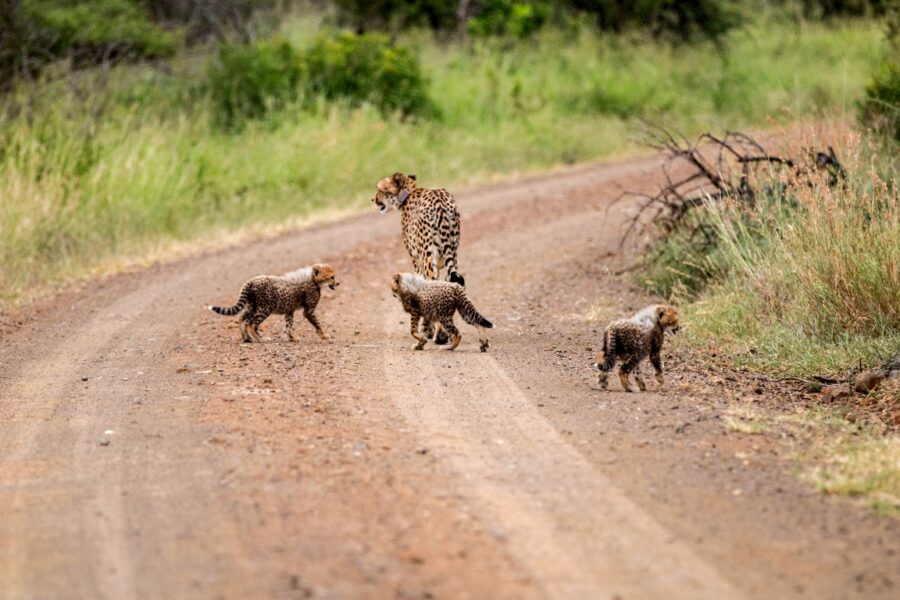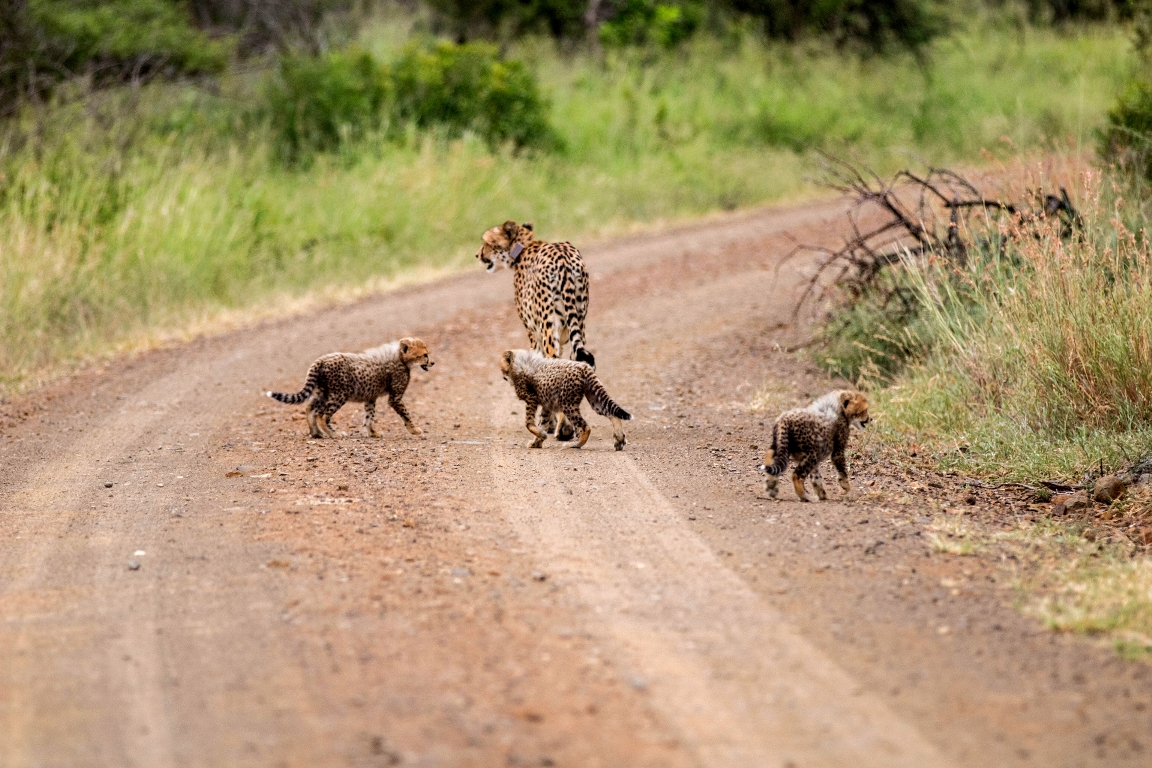
Three New Cheetah Cubs for Hluhluwe-iMfolozi Park
There has been an incredibly special sighting of a female Cheetah with three new cubs in Hluhluwe-iMfolozi Park (HiP). The sighting of the cubs, believed to be around two-and-a-half months old, was made recently by The Wildlife ACT monitoring team on the iMfolozi section of the Park. This female Cheetah, known as CF23 (Cheetah Female […]

There has been an incredibly special sighting of a female Cheetah with three new cubs in Hluhluwe-iMfolozi Park (HiP). The sighting of the cubs, believed to be around two-and-a-half months old, was made recently by The Wildlife ACT monitoring team on the iMfolozi section of the Park.
This female Cheetah, known as CF23 (Cheetah Female number 23) was introduced into the Ezemvelo KZN Wildlife-managed park, from Samara Private Game Reserve, as recently as June 2020. Her cubs are an invaluable addition, not only to the HiP population but the national meta-population as a whole.
“These cubs carry extra significance and are a testament to the success of the introduction thus far. It has been really special to follow CF23 from the day she was introduced to where she is now. She has done remarkably well,” says Jarryd Foster, Wildlife ACT Priority Species Monitor.

In South Africa, the threats influencing the Cheetah’s decline include habitat loss, disease, direct persecution by humans, competition with other predators and poor genetic diversity. Thus monitoring of both Cheetah and other large predators is critical to effective Cheetah conservation.
Cheetah population was crashing and in need of support
HiP holds one of the larger populations of Cheetah in a protected area in South Africa, and was historically the largest in KwaZulu-Natal, making it an extremely important stronghold for this species. However, studies revealed that this population was crashing and was in need of support.
New individuals to boost Cheetah numbers and improve genetics were urgently required. Wildlife ACT, working in partnership with Ezemvelo KZN Wildlife and the Endangered Wildlife Trust (EWT), have assisted in reintroducing 9 new Cheetah to the Park over the past 4 years.
Hluhluwe-iMfolozi Park Ecologist, Dr Dave Druce, said “we are extremely grateful to Wildlife ACT and the Endangered Wildlife Trust for their support and assistance in sourcing and bringing new Cheetah into HiP, for Wildlife ACT’s monitoring of the population and for those reserves across South Africa who have provided the Cheetah. The partnership that has been formed between Ezemvelo KZN Wildlife, Wildlife ACT and EWT has been extremely beneficial and we are now starting to see very positive results.”
The primary aim of Wildlife ACT’s Cheetah Conservation Programme is to help increase and maintain Cheetah numbers in South Africa through monitoring and research, which in turn informs adaptive management of the species, and to support the management of the species through safe relocations and interventions. This ultimately helps to establish new populations and maintain implementation of correct management and conservation practices for the species.

Over the past decade, Wildlife ACT has helped to grow and protect the South African Cheetah population through their long-term monitoring projects, tracking collars, and reintroductions. The goal is to continue this work in collaboration with partners under the guidance of the National Cheetah and Wild Dog Biodiversity Management Plan. This ongoing work includes continued monitoring, adaptive management, education and awareness, management support, and identifying and managing threats.
A big thank you also goes to Andrew Bone and the Forever Wild Foundation for their ongoing support towards the Cheetah Conservation Programme.
